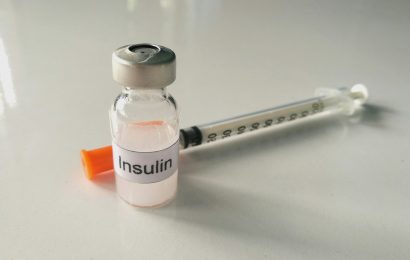Chances are, somewhere alone the lines, you’ve read about or heard the phrase “insulin resistance.” It’s one of those terms that some folks in the medical profession — and in the media — often use, but it’s not always explained very well. As a result, it can seem rather vague and even be a little confusing.
Insulin: “do your job”
To understand the meaning and implications of insulin resistance, it helps to first take a look at the hormone insulin. The pancreas makes insulin in special clusters of cells called islets. Within these islets are beta cells that faithfully churn out insulin and release it into the blood where it’s set free to do its job (Coach Bill Belichick would approve!). Like all hormones, insulin has a very specific role: it helps the body use glucose from the carbs that you eat for energy. Specifically, it signals muscle, fat, and liver cells to take up glucose from the blood to be used for fuel. If the body says, “No thanks, I’m good,” that energy (glucose) gets stored as glycogen (and, if glycogen stores are full, fat) for use later on. Insulin is a blood glucose regulator, meaning that it helps keep blood sugar levels at a safe level, preventing it from going too high (hyperglycemia) or too low (hypoglycemia). In addition, insulin puts a halt on glucose release from the liver, which also prevents blood sugar levels from climbing.
When things go haywire
You have to admit — when the body is working as it should, it’s pretty amazing. The pancreas and insulin are no exception. However, things do go awry, unfortunately. Not so much with insulin, but more with how the body’s cells respond to insulin. Basically, muscle, fat, and liver cells start giving insulin the cold shoulder and they ignore or “resist” what insulin is attempting to do: grab glucose from the bloodstream and take it into the cells. The pancreas responds, in turn, by releasing more insulin to try and move that sugar into cells. More and more insulin is needed to help keep blood sugar levels in a safe range.
But over time, the pancreas can get tired out. The beta cells simply can’t keep up with the body’s demand for insulin. What happens next? Prediabetes and, eventually, Type 2 diabetes can settle in. And, other health issues can occur, too, such as a higher risk for heart disease, stroke, fatty liver disease, and several different types of cancer, including bladder, breast, colorectal, and pancreatic cancers.
What’s the instigator?
Obviously, insulin resistance is not anything you want to face. But what causes it to happen in the first place? While the exact cause of insulin resistance isn’t known, there are several factors that can trigger or signal the onset of insulin resistance. And these might sound somewhat familiar. They include:
• Being overweight or obese
• Having a large waistline (35 inches or more in women, 40 inches or more in men)
• Being sedentary
• Smoking
• Having metabolic syndrome, a combination of three or more of the following: low HDL (“good”) cholesterol, high triglycerides, high blood pressure, high blood sugar, large waist size
• Dark skin patches (called acanthosis nigricans) on the back of the neck, armpits, elbows, knees, or knuckles
• Stress
• Taking steroids
• Taking other types of medicines, including thiazide diuretics, statins, antipsychotic agents, and immunosuppressive agents
• Having sleep problems, such as sleep apnea
• Pregnancy
• Having polycystic ovary syndrome (PCOS)
• Being of a certain ethnic group, including African Americans, Asians, Hispanics, Pacific Islanders, and Native Americans
How do you know if you have insulin resistance?
You may not “feel” like you have insulin resistance. In other words, you might not have any symptoms. It’s not uncommon for people to have insulin resistance for years and not know it. However, since about 70% of people who have insulin resistance or prediabetes will go on to develop Type 2 diabetes, it’s important to stay on top of things and not only know what your own risk factors are, but to get checked regularly (at least once a year).
There’s no one test to determine if you have insulin resistance. However, your doctor may order some or all of the following:
• A fasting glucose
• An A1C
• A fasting insulin level
• HOMA (homeostatic model assessment, which measures glucose and insulin levels and calculates function of the beta cells)
Say it isn’t so
No one likes to find out they have a condition or a disease, that’s for certain. However, if there’s any silver lining in having insulin resistance, it’s that you can do something about it. You’re not doomed to develop Type 2 diabetes, in other words. But, what it does mean is rethinking certain aspects of your life and your health. You can’t change your genetics or your ethnicity. But you can change your lifestyle. No, it’s not always easy, but you might be surprised at how even small changes or tweaks to your daily routine can go a long way in preventing or delaying what comes down the pike.
What you can do
• If you’re at risk of diabetes or have prediabetes, you might consider signing up for a Diabetes Prevention Program in your community. If there isn’t one nearby, check to see if an online program is available. Visit the CDC’s website to learn more.
• Aim to lose at least 5% to 7% of your body weight. In many cases, that amount of weight loss is enough to “reverse” insulin resistance and/or prediabetes.
• Be on the move. Make an effort to be active most days of the week. Walking, swimming, dancing, biking, playing tennis…you choose, just move. Physical activity helps to increase insulin sensitivity so that your body is able to make its own insulin work like it should.
• Focus on getting enough quality sleep. Studies show that sleeping less than 7 hours a night and/or having sleep apnea can seriously impede your health.
• Stop smoking. Period.
• Consider following a DASH (Dietary Approaches to Stop Hypertension) eating plan, which has been proven to help lower blood pressure, and may also lower insulin resistance, as well. A dietitian can help you get started, or you can find out more here.
• Fill up on fresh vegetables, fruits, whole grains, and lean proteins, while forgoing processed foods, refined carbs (like white bread), and sugary drinks.
• Choose your fats wisely. Saturated fat, found in red meats and whole-milk dairy, has been linked with increasing insulin resistance, while unsaturated fats, found in fatty fish and vegetable oils, may help increase insulin sensitivity.
• If your goal is to lose weight, make sure you lose it with a combination of cutting back on calories and stepping up the exercise. In one study at the University of New Mexico, people who lost 10% of their weight through diet and exercise improved their insulin sensitivity by 80%.
• Finally, you might talk with your doctor about taking metformin. Yes, it’s a medicine, but it’s a very effective one at that: it suppresses the release of glucose by the liver and it also enhances uptake of glucose from the bloodstream into cells. Metformin isn’t for everyone, and it’s perfectly reasonable to try lifestyle measures first.
Want to learn more about insulin resistance? Read “Increasing Insulin Sensitivity” and “Sleep Well to Avoid Insulin Resistance, Study Suggests.”





